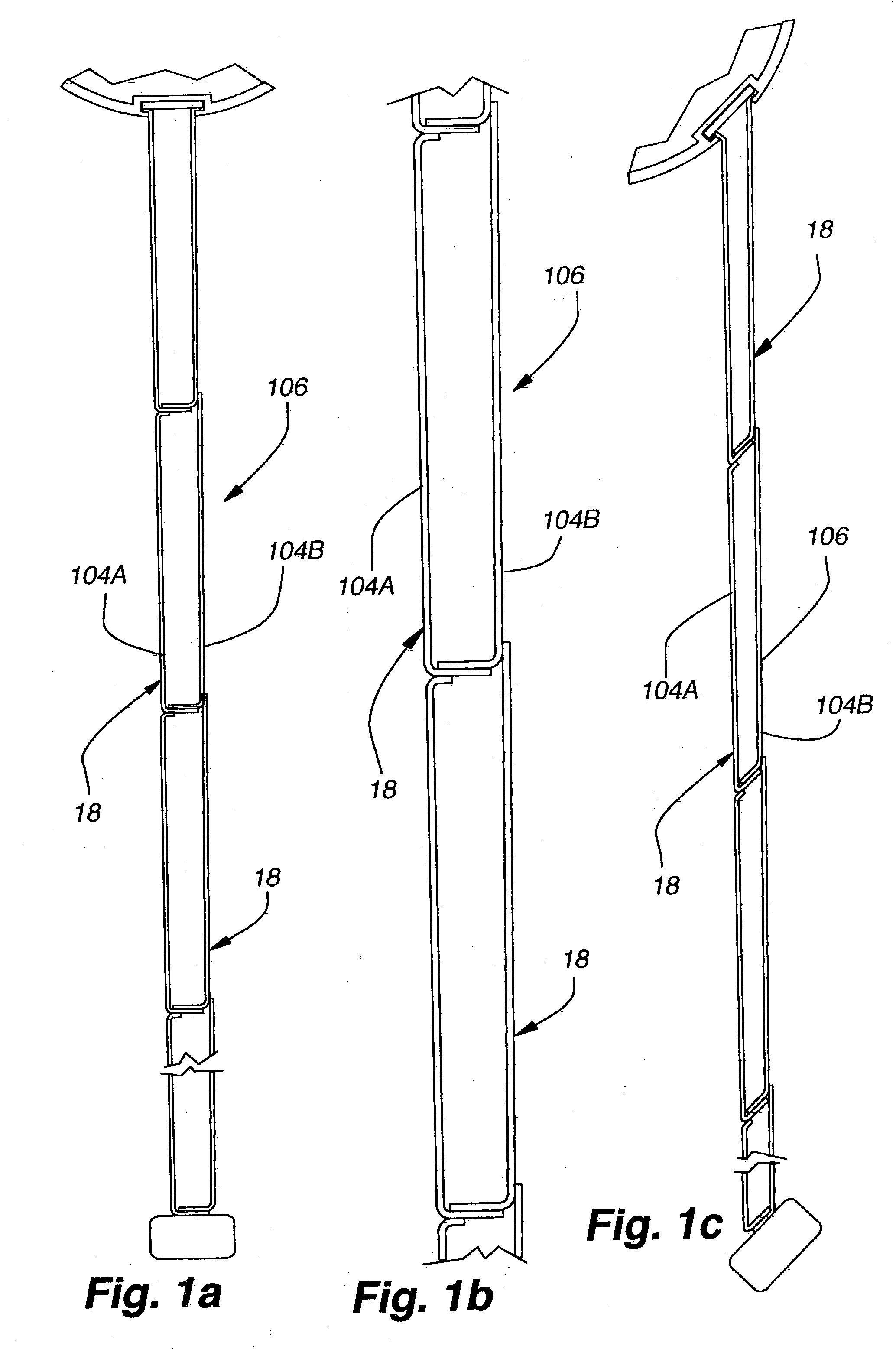Cellular shade material for coverings for architectural openings
a technology of architectural openings and cellular shades, which is applied in the direction of shutters/movable grilles, door/window protective devices, transportation and packaging, etc., can solve the problems of cellular shades being typically expensive to manufacture, obstructive head rails, and not aesthetically pleasing
- Summary
- Abstract
- Description
- Claims
- Application Information
AI Technical Summary
Problems solved by technology
Method used
Image
Examples
first embodiment
[0074] a fabrication apparatus for producing roller shade material 12 is illustrated in FIGS. 4-12 and 14-16. The fabrication apparatus includes a fabric tape supply section (supply section) 100, wherein fabric tapes 104 are unwound from rolls 102 and the tape is orientated for a subsequent folding operation. One or two rolls 102 of tape can be utilized. As shown in FIGS. 4 and 5, two fabric tapes 104 are unwound from separate rolls 102 and adhesively joined together for subsequent operations. One tape 104A forms primarily the front side 22 of the cells 18 of the resulting cellular shade material 12 and the other tape 104B forms primarily the back side 24 of the cells. The supply section 100 can also be configured with a single tape 104, wherein the tape forms both the front and back sides of the cells. The configuration and operation of the supply section is discussed in detail below.
[0075] After exiting the supply section, the joined tape 106 is passed into the folding and adhesiv...
second embodiment
[0140] The elongated drum 504 is best shown in FIGS. 38 and 39. The drum includes a central portion 532 with a surface onto which the folded tape 530 is laid to form the cellular shade material 12, and two end caps 534 that have a greater diameter than the central portion. The circumferential edges of the end caps support the drum against two elongated rollers 536 of the base 506 as the drum is rotated. In one variation of the second embodiment, the drum includes a center axle through which the drum is supported in bearing assemblies above the bottom surface of the base.
[0141] The base 506 is best shown in FIGS. 38, 39 and 40. The base has a pair of parallel recessed tracks 510 that extend substantially the entire length of the base in a direction parallel to the drum 504. The wheels 538 of the wheeled base 514 of the cart 502 are received in the tracks 510, which guide the cart as it moves along them. In-between the tracks, the rack 512 is secured to the base. The rack 512 interfac...
PUM
 Login to View More
Login to View More Abstract
Description
Claims
Application Information
 Login to View More
Login to View More - R&D
- Intellectual Property
- Life Sciences
- Materials
- Tech Scout
- Unparalleled Data Quality
- Higher Quality Content
- 60% Fewer Hallucinations
Browse by: Latest US Patents, China's latest patents, Technical Efficacy Thesaurus, Application Domain, Technology Topic, Popular Technical Reports.
© 2025 PatSnap. All rights reserved.Legal|Privacy policy|Modern Slavery Act Transparency Statement|Sitemap|About US| Contact US: help@patsnap.com



